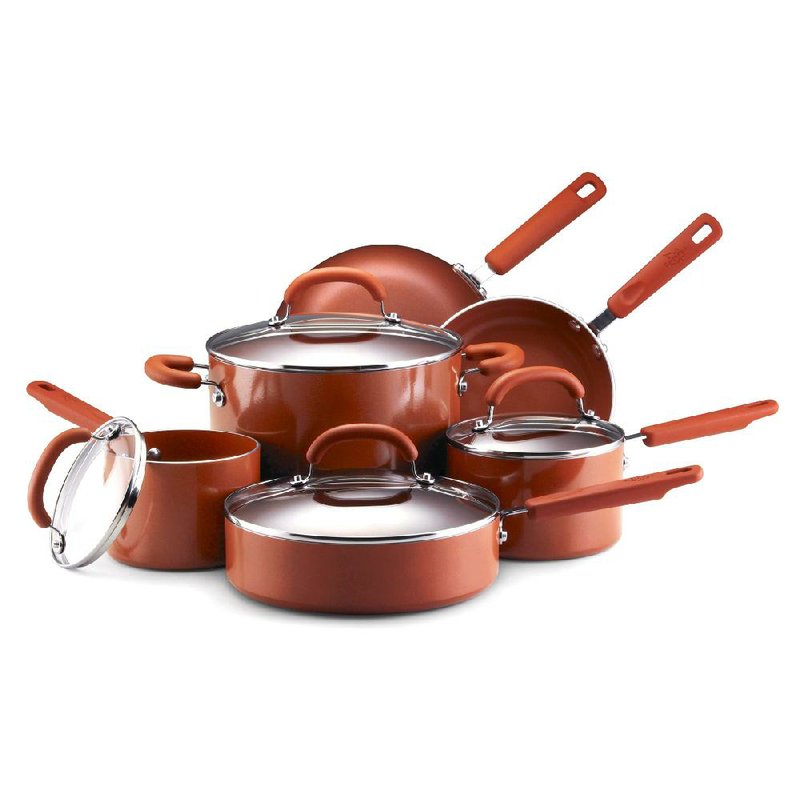LITTLE ROCK — Cookware or space-age gadgets? With names like TFal, Circulon and Calphalon, it’s hard for customers to tell which they’re buying.
Shopping for cookware can be as complicated as building a flying car or a kitchen that cleans itself - OK, not really, but there is an abundance of options ranging from tried and true stainless steel to ecofriendly pots and pans. There is even cookware made with diamond crystals.
Choosing the right cookware is often as much a matter of personal taste as necessity.
There are a few easy guidelines for buyers beginning the shopping process.
Set a price point. Cookware costs can range from $70 for an inexpensive set of nonstick Farberware pots and pans to thousands for upscale sets. An All-Clad stainless-steel saute pan can cost $179.95 at an upscale cookware store - on sale. That’s a lot of cash for one little pan. It’s important to know how much you’re willing to spend before you fall in love with a particular set.
Consider your lifestyle. Are you wanting to create rich, intricate sauces, to sear, to braise? Or are you just wanting to make pasta and the occasional hamburger? The answers to these questions will determine what kind of cookware you need, according to Lou Rice, the executive chef in residence at Northwest Arkansas Community College in Bentonville.
“Do I have to have a $200 stockpot to boil water for pasta? No, I do not,” he says.
“I can use a cheap, thin-walled aluminum stockpot.” If you’re making potato soup, however, that cheap stockpot will probably be less than ideal, he says.
Decide how many pieces you want. Cookware can be bought in sets or as individual pieces. It’s not uncommon to buy one piece of cookware at a time - particularly with pricier collections, says Diane Jackson, media representative for Swiss Diamond.
How much cookware you need depends largely on how often you cook and whether you want to buy a full set of cookware at once.
It’s normal for most households - even those where cooking is infrequent at best - to have a couple of saucepans, a saute pan, a stockpot and a skillet or two. In fact, that’s what most chefs will recommend for every kitchen. Some cooks want more specialized pans like a crepe pan, paella pan or grill pan, while others are content with a good cast iron skillet and a handful of stainless steel pots.
Ask a friend. Finding good cookware is often not an easy task. Sometimes, it’s best to ask for a second opinion from someone with a similar lifestyle. If a friend raves about his cookware, ask to try it out, Jackson says. Likewise, listen to complaints about certain brands or collections from friends and family. If friends and family members’ cookware isn’t appealing, look for a cooking demonstration at your local culinary store where you can touch, feel and even try cookware. Or buy a small, inexpensive pan from a collection and try it at home.
Visit the local restaurant supply store. “I think restaurant supply companies are one of the best kept secrets for home cooks,” says chef William Ginocchio of the Arkansas Culinary School. “The pans you’ll find there aren’t pretty - they’re not the kind of thing you’re going to want to hang on your wall, but I recommend to a lot of people that they go buy their pans there.”
Why? Because most of the pans you find at restaurant supply stores are inexpensive and designed to stand up to the wear and tear of restaurant cooking, Ginocchio says. “They’ll do anything you want them to, and they’ll last a long, long time,” he says.
HomeStyle, Pages 33 on 04/14/2012
